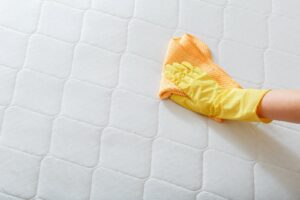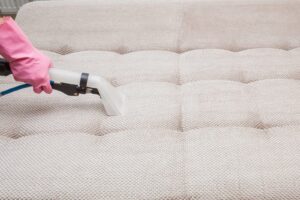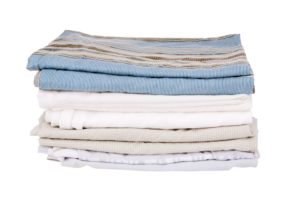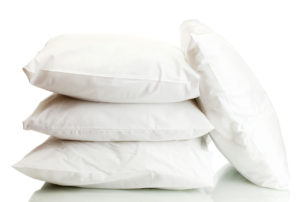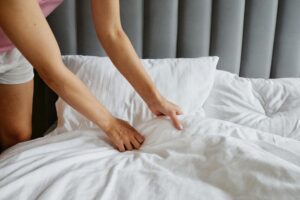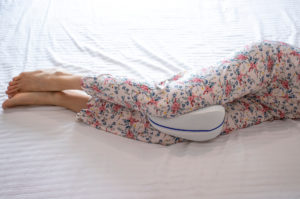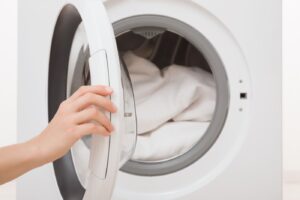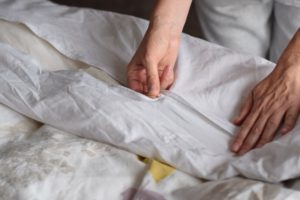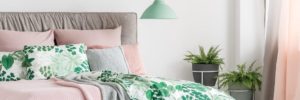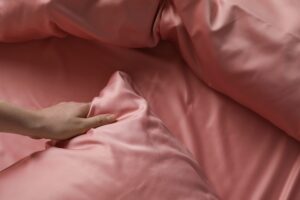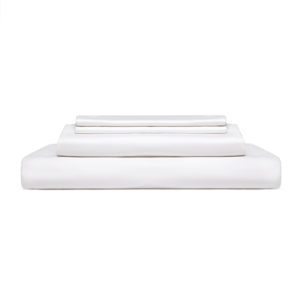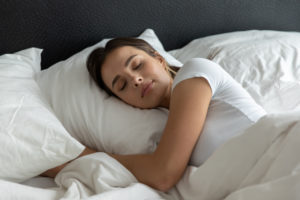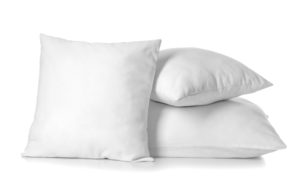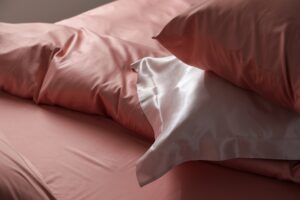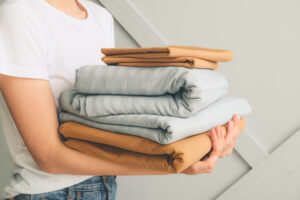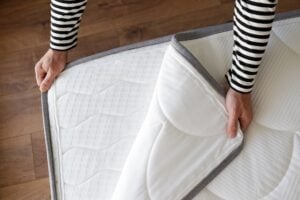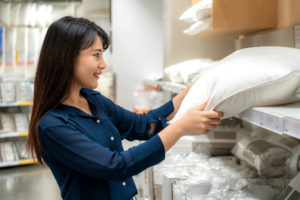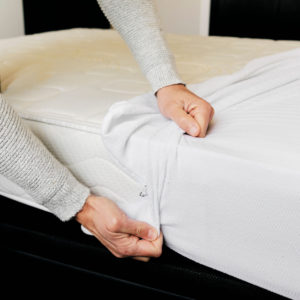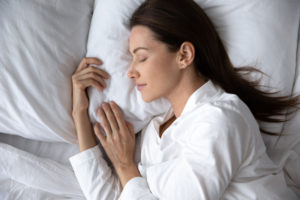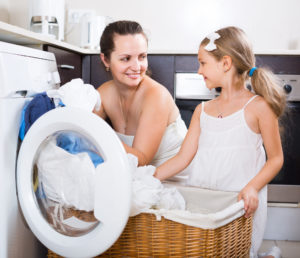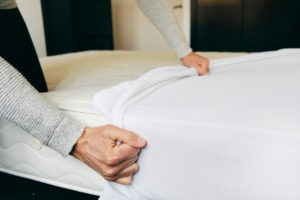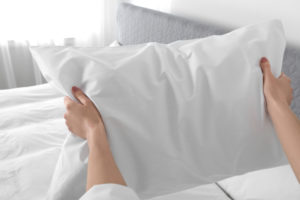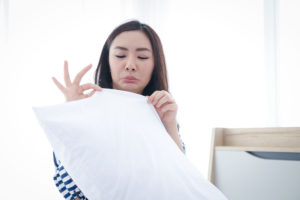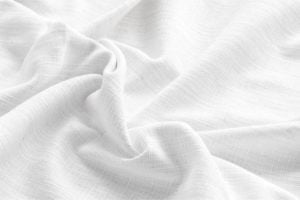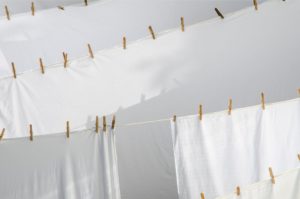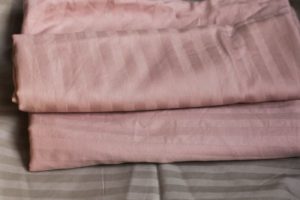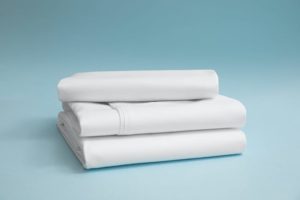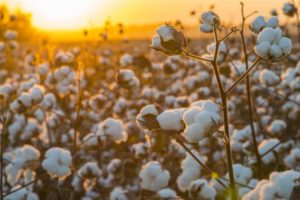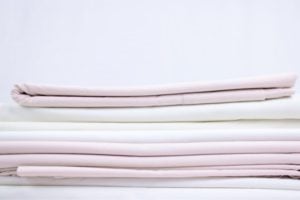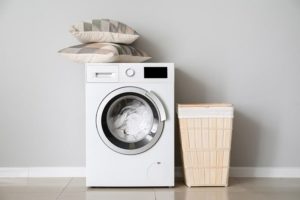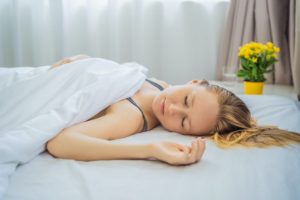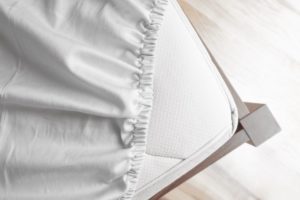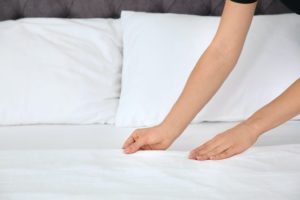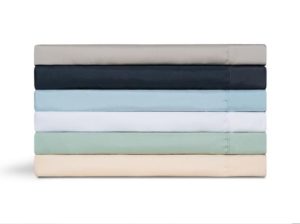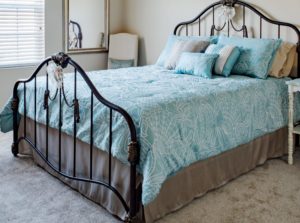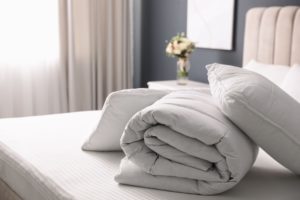Mattress Pad vs. Mattress Topper: What Are They, and What’s the Difference?
A number of bedding accessories are available these days for shoppers looking to enhance their sleep experience. Sifting through the options can sometimes be confusing, as many products appear to have overlapping functions.
Mattress pads and toppers are two products that are often mistaken for each other because they seem similar at first glance. Both are placed on top of a mattress in order to increase comfort, but they do so to different degrees.
We will explain the difference between mattress pads and mattress toppers and discuss why shoppers might choose one over the other. We will also look at how their construction can affect the overall feel of a bed.
What Is a Mattress Pad?
A mattress pad is placed on top of a mattress in order to alter its feel and/or shield it from liquids, accidents, and dirt. Mattress pads are usually 1 to 2 inches thick at most, which is why they don’t drastically change a bed’s firmness level. They also aren’t meant to offer significant pressure relief, but they can make a bed feel more plush.
A mattress pad can be made from synthetic or natural materials, or a combination of both. Precisely how a mattress pad changes the feel of a bed depends on the style and type of material used in its construction.
Mattress Pad Benefits
A mattress pad is typically used to modify a mattress’ comfort level. Mattress pads can add a level of plushness to a very firm model, or they can give structure to a softer design.
People sometimes turn to mattress pads to protect their bed from spills and other accidents. Depending on the model, a mattress pad can also help shield a mattress from dust, mites, and other allergens. While mattress protectors are a separate product designed solely for this purpose, they are sometimes quite noisy, due to the waterproof material used to make them. Mattress pads can be a quieter alternative that may also be more comfortable.
Mattress Pad Types
Different mattress pads are designed with different goals in mind. Some models are meant to protect a mattress from everyday wear and tear, while others are engineered to keep sleepers cool.
A mattress pad’s performance ultimately depends on the materials used to make it.
Feather
A feather mattress pad is produced using duck or goose feathers. Feather mattress pads have a plush feel, so they are particularly suitable for people looking to soften a very firm bed. The material is also fairly breathable, so heat buildup is unlikely to be an issue.
Many feather mattress pads feature a baffle box construction to help keep the fill evenly distributed. However, the feathers may still clump, resulting in an uneven surface, unless the pad is regularly fluffed.
Wool
Sourced primarily from sheep, wool naturally wicks away moisture and keeps heat from building up. Wool is often used in mattresses and mattress pads because it’s a natural fire barrier. Wool mattress pads can make a stiff mattress feel cozier without retaining too much heat.
Fiber
Consisting of polyester fill, fiber mattress pads are often suitable for people sensitive to down feathers. They are typically lightweight, soft, and machine-washable. Fiber mattress pads are a good choice for sleepers looking to add some extra cushioning without inhibiting movement. Temperature neutrality can vary based on construction, but most fiber pads are fairly breathable. They also tend to be more economical than other types of mattress pads.
What Is a Mattress Topper?
A mattress topper is a more substantial layer of material that is meant to noticeably change the firmness level of a mattress. Toppers can be anywhere from 1 to 4 inches thick and are made from a variety of materials. Unlike a mattress pad or protector, toppers aren’t usually intended to protect a mattress from liquids or other contaminants.
Toppers are generally made in the six standard mattress sizes. Some toppers are designed to simply rest directly on top of the mattress, while others have elastic straps to ensure a secure fit.
Mattress Topper Benefits
A topper can notably change a mattress’ firmness level in either direction. A thick and plush model can add extra cushioning to a very firm bed. For a soft mattress with too much give, the right topper can provide a firmer feel.
While even the best topper can’t fully restore an old mattress, it can temporarily compensate for slight sagging or indentations. A topper can also be used to increase a mattress’ overall height or slow down typical wear and tear. Toppers are also useful when a person doesn’t want to replace a mattress but would still like to change the feel of their bed.
Mattress Topper Types
Like mattress pads, toppers come in a range of styles and materials. Some are made to optimize pressure relief, while others are designed to isolate motion and/or keep sleepers cool. Knowing exactly how you want to modify your sleep experience can help you choose the right type.
Memory Foam
While a mattress pad might add some cushioning, a memory foam topper can provide an even deeper level of pressure relief. Memory foam cradles the body and alleviates tension, making it a good choice for side sleepers or lightweight people with very firm mattresses.
Because they tend to isolate motion well, many couples opt for memory foam toppers in order to reduce sleep disturbances.
Latex
Latex toppers are suitable for sleepers who want extra contouring without too much sink. Latex offers ample pressure relief while still providing enough bounce to facilitate movement. Sleepers looking to increase their mattress’ firmness level might want to consider a Dunlop latex topper, as this type is typically denser. Talalay latex, on the other hand, is usually more breathable, making it a better topper choice for people who sleep hot.
Wool
While not as common as other types, wool mattress toppers are sought out for their softness and breathability. Wool excels at temperature regulation, so wool toppers are suitable for both warm and cold seasons.
Feather
Feather mattress toppers tend to be very soft and fluffy, but they can vary widely in terms of support. Some designs layer more than one type of feather in order to strike a balance between plushness and loft. Feather toppers are seasonally versatile since they regulate temperature well.
Mattress Pads vs. Mattress Toppers
Mattress pads and mattress toppers do have some similar functions, but choosing between the two comes down to whether you want to focus more on protecting your mattress or on significantly changing its feel.
Mattress pads are ideal for people looking to add a little comfort to their bed while also keeping their mattress clean and dry. Mattress pads won’t significantly change a mattress’ firmness level, but they can soften or reinforce a bed’s surface depending on the design. Mattress pads can also protect your bed from moisture and dirt, helping to minimize unnecessary wear.
Toppers are a better choice for sleepers looking to substantially adjust the feel of their bed. Because mattress toppers are thicker than mattress pads, they are better equipped to make a mattress either firmer or softer. When made from breathable materials, toppers can also facilitate a cooler sleep.
Toppers can help extend the lifespan of a mattress by minimizing premature sagging and impressions. Toppers can also reduce aches and pains by cushioning key pressure points throughout the body.
In short, mattress pads can fine-tune the feel of a bed and provide modest protection, while toppers offer a more notable transformation in comfort and support.
| Category | Mattress Pads | Mattress Toppers |
|---|---|---|
| Use | A mattress pad is designed to increase a bed’s comfort and protect a mattress from accidents and contaminants. | A mattress topper is used to noticeably change a mattress’ feel and provide extra pressure relief. Toppers can also revitalize an old mattress or lengthen the life of a new one. |
| Feel | A mattress pad can make a bed feel slightly more plush, but it won’t alter a mattress’ firmness level. | A topper creates a more marked change in the way a bed feels. Depending on the type, a topper can make a mattress softer or firmer. |
| Durability | Durability largely depends on materials and craftsmanship, but most mattress toppers last between 3 and 5 years. | The average mattress topper should perform optimally for 3 to 5 years. |
| Cost | Mattress pads can range from $20 to a few hundred dollars. Cost depends on type and quality. | Toppers are generally more expensive than mattress pads. The average queen size topper costs between $150 and $400. |
| Cleaning & Care | Care guidelines vary based on model, but most mattress pads can be machine washed and dried. | While not as low maintenance as mattress pads, most toppers have removable covers that are machine-washable. The interior components must generally be spot treated, though, and some designs should only be dry cleaned. |
Which Should You Choose?
Choosing between a mattress topper and a mattress pad will likely come down to your personal needs and preferences. A topper can modify a bed’s firmness level, while a mattress pad will only slightly adjust its feel.
Mattress pads sometimes have a waterproof barrier to safeguard against liquids and spills, but most toppers aren’t designed to protect a mattress from these types of accidents.
Mattress pads and toppers have comparable lifespans. Pricing varies widely based on materials and brand, but toppers are generally more expensive. Mattress pads are often machine-washable, but toppers can be more difficult to clean because of their bulkier design.
Mattress pads offer an extra layer of plushness while protecting your mattress from dirt and spills. They are a low-maintenance solution for sleepers looking to add a little comfort to their bed without drastically changing its feel.
Mattress toppers create a notable difference in the way a mattress feels. Toppers can make a bed softer or firmer, depending on the style and materials used. Toppers can improve the performance of an older mattress or protect a newer one from premature wear.

Still have questions? Ask our community!
Join our Sleep Care Community — a trusted hub of sleep health professionals, product specialists, and people just like you. Whether you need expert sleep advice for your insomnia or you’re searching for the perfect mattress, we’ve got you covered. Get personalized guidance from the experts who know sleep best.


